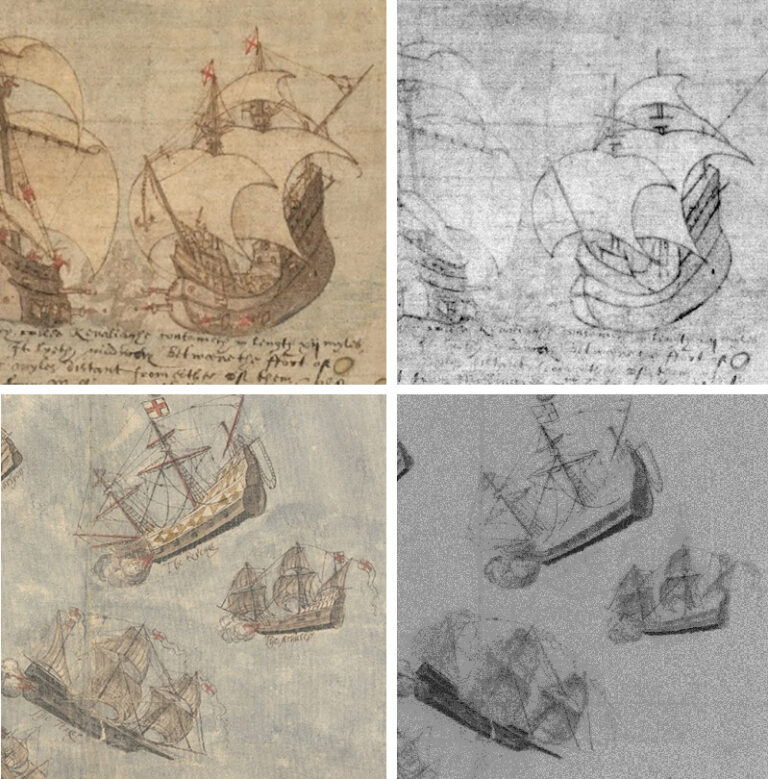For the first time, The National Archives is celebrating British Science Week – a nationwide celebration of science, engineering and mathematics taking place from 5 to 14 March 2021.
When people think about science, GLAM institutions (Galleries, Libraries, Archives and Museums) are probably not the first organisations that come to mind. However, behind the scenes in many GLAM institutions, including The National Archives, there are teams of heritage scientists and conservation researcher practitioners using scientific study and research to protect and enhance the understanding of heritage collections.
Heritage science and conservation research is a multi-faceted and cross-disciplinary field that draws on diverse humanities, sciences, and engineering disciplines. It focuses on enhancing the understanding, care, enjoyment and sustainable use of heritage. In 2006 heritage science was formally recognised in the UK as central to ensuring the preservation and access to our shared cultural heritage by the House of Lords Science and Heritage report[ref]https://publications.parliament.uk/pa/ld200506/ldselect/ldsctech/256/256.pdf[/ref]. Over the past 15 years heritage science and conservation research has become an increasingly lively field, and is now carried out in universities, heritage organisations and in industry.
The National Archives is the only UK archive with a fully equipped heritage science and conservation research laboratory, and over the past decade we have become an incubator for challenge-led research and a hub for student training. Heritage scientists and conservators work collectively to co-create projects and to address topics relevant to the conservation, preservation and documentation of archival collections. Our projects range from understanding material composition and the physical state of a document to understanding how art materials were used throughout history, modelling how materials will degrade, and understanding changing artistic practices. We also research new materials and sustainable conservation treatments that can be applied in practical art conservation.

The theme of this year’s British Science Week is ‘Innovating for the Future’ and we want to showcase the innovative heritage science and conservation research that goes on behind the scenes at The National Archives.
Throughout the week we will be highlighting blogs written by staff in the Collection Care department; like our quick guide to microfading – a technique used to assess the long-term colour change of materials, and our project investigating how scientific analysis and artificial intelligence are helping us to better understand the painting techniques, use of colour and materials deployed by Tudor map-makers.

We are delighted to announce that on 9 March two family activity packs for home or for in the classroom will be published with The National Archives’ Time Travel Club: ‘How to Make Berry Ink’, where children can learn how to make their very own blueberry ink, and ‘How to Make Invisible Ink’, where children can learn how to send secret messages using lemon juice. The packs will be available on The Time Travel Club webpages.
The Collection Care department is also proud to take part in British Science Week’s ‘Smashing Stereotypes’ campaign[ref]https://www.britishscienceweek.org/plan-your-activities/smashing-stereotypes/[/ref]. This nationwide campaign aims to encourage STEM employees and researchers to share stories about their day-to-day work and highlight the diversity of the STEM workplace, the extent of jobs and careers available, and that scientists are just like everyone else. On 9 March you can read our blog about how dyslexia helped guide one of our conservators to their dream job.
If you are interested in finding out more about the hugely varied mix of activities and events taking place across the length and breadth of the country to celebrate science and engineering in the UK, more information is available on the British Science Week website.